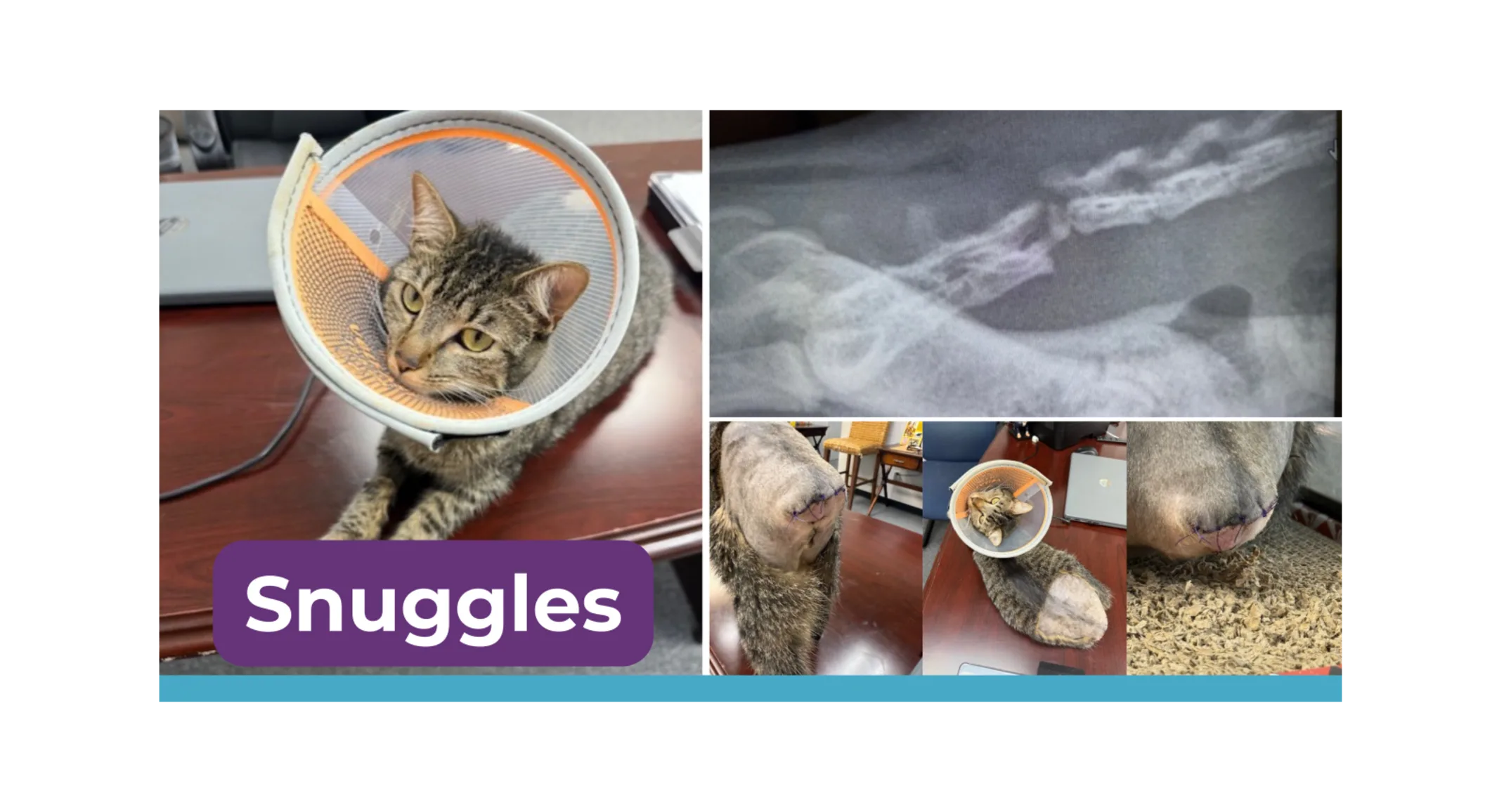Snuggles’ Story: A Sacrocaudal Fracture in a Young Cat
Case Study

Meet Snuggles, a playful 1-year-old domestic shorthair cat who recently faced a scary medical emergency. Her case highlights a unique type of spinal injury we sometimes see in cats and what it can mean for their long-term health and quality of life.
What Happened to Snuggles?
Snuggles managed to sneak outside one evening and was gone for nearly 24 hours. When her family found her, they immediately noticed something wasn’t right - she was struggling to move her back end and her tail hung limp. She also wasn’t urinating or defecating on her own.
Her primary veterinarian took X-rays, which showed a fracture at the base of her tail. Snuggles was then referred to our team for a neurological evaluation.
Understanding Sacrocaudal Injuries
The sacrocaudal region is where the spine meets the tail. Trauma in this area can damage the nerves that control the tail, bladder, and bowel.
When we examined Snuggles:
She could still walk normally and had normal reflexes in her legs.
Her tail was limp, and her anal tone slightly reduced.
Her bladder was very full and easy to express, but it was difficult to completely empty.
She had no pain sensation in the tip of her tail, but did respond at the tail base.
This pattern is typical of a sacrocaudal fracture, and it told us that her sciatic nerves (which control the legs) were spared, good news for her mobility.
Why Does This Matter?
One of the biggest concerns with sacrocaudal injuries is urinary incontinence.
Cats with this condition often have a large, floppy bladder with a weak urinary sphincter.
They may leak urine constantly or be unable to empty their bladder completely.
This puts them at risk for urinary tract infections and can significantly affect their comfort, and their family’s quality of life.
While incontinence itself isn’t usually life-threatening, it can be a long-term management challenge.
Snuggles’ Prognosis
The good news? Snuggles showed pain sensation at the tail base, which is an encouraging sign for recovery. Research has shown that cats with intact sensation at the base of the tail are more likely to regain bladder and bowel control, often within 30 days.
Even cats without tail base sensation may recover (around 60% do), but the prognosis is less predictable.
Treatment Options
For cats like Snuggles:
Careful bladder management is essential to avoid infection.
Tail amputation is often recommended to prevent further trauma to the injured area, but this surgery is typically postponed until urinary continence has returned.
The goal is always to maximize both the pet’s comfort and the family’s quality of life.
Looking Ahead
Snuggles’ case is a great reminder of how resilient cats can be, and how important early neurological evaluation is when spinal trauma is suspected. With close monitoring, supportive care, and time, Snuggles has a strong chance of regaining normal bladder function and going back to her playful self.
Key Takeaways for Pet Parents
Tail base injuries can affect bladder and bowel control.
Pain sensation at the tail base is a positive prognostic sign.
Urinary management is critical to prevent infections.
Many cats recover function within weeks, but patience is needed.
References:
Couper & De Decker (2020).
Evaluation of prognostic factors for return of urinary and defecatory function in cats with sacrocaudal luxation.
JFMS, 22(10):928-934.
Tatton, Jeffrey, Holmes (2009).
Predicting recovery of urination control in cats after sacrocaudal injury: a prospective study.
JSAP, 50:593-596.
